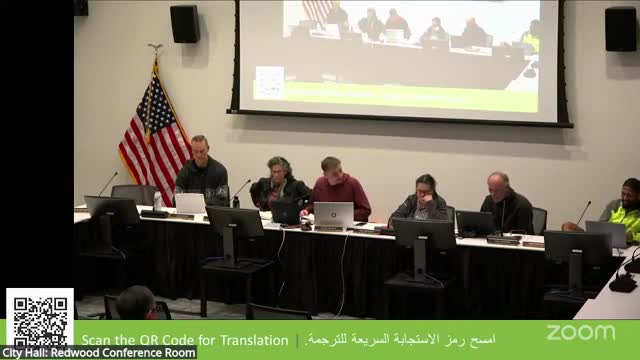BPAC votes to study adopting VTA bicycle technical guidelines as a Sunnyvale design reference
February 22, 2025 | Sunnyvale , Santa Clara County, California
This article was created by AI summarizing key points discussed. AI makes mistakes, so for full details and context, please refer to the video of the full meeting. Please report any errors so we can fix them. Report an error »

The Bicycle & Pedestrian Advisory Commission voted Feb. 20 to accept a study issue that asks staff to evaluate adoption of the Santa Clara Valley Transportation Authority (VTA) Bicycle Technical Guidelines as a Sunnyvale design reference for bicycle facilities, and to develop a way to notify the public when projects cannot meet those guidelines.
What the commission approved: Commissioner Hageman proposed the study issue and the commission voted to accept it for study. During the debate commissioners and staff emphasized two distinct aims: (1) identify a consistent, local design reference that reflects best practices for bicycle infrastructure, and (2) define a transparent process to notify and consult the public when a project cannot meet the guideline’s recommendations because of field constraints or conflicting requirements.
Why it matters: The VTA technical guidelines were presented to BPAC as a locally produced, relatively detailed set of preferred practices for bike lanes, buffer widths and other design features. Several commissioners said adopting a locally focused guideline would give residents and advocates a clear baseline to review new project designs and would make tradeoffs more transparent when constrained conditions force compromises.
Content of the study issue: The proposed evaluation asks staff to examine how the VTA guideline would interact with state and federal standards, and to recommend how Sunnyvale should treat the VTA guideline (for example, as a required minimum, as a presumption or as a preferred standard). It also asks staff to propose how the city should notify the public — through council agendas, BPAC hearings or public outreach — when a project cannot meet guideline recommendations.
Vote and outcome: The commission’s roll call recorded five votes in favor, one vote against and one absence; the motion carried. Commissioners asked staff to consider implementation implications, including workload and coordination with Caltrans and other state/federal requirements.
Next steps: With study issue acceptance, staff will prepare an analysis of the guideline, including legal/technical implications, and return to BPAC with findings and recommended next steps.
Ending: Commissioners and members of the public who spoke urged more predictable standards and clearer outreach when local tradeoffs are required; staff will present the study results to BPAC before any formal adoption is recommended to City Council.
What the commission approved: Commissioner Hageman proposed the study issue and the commission voted to accept it for study. During the debate commissioners and staff emphasized two distinct aims: (1) identify a consistent, local design reference that reflects best practices for bicycle infrastructure, and (2) define a transparent process to notify and consult the public when a project cannot meet the guideline’s recommendations because of field constraints or conflicting requirements.
Why it matters: The VTA technical guidelines were presented to BPAC as a locally produced, relatively detailed set of preferred practices for bike lanes, buffer widths and other design features. Several commissioners said adopting a locally focused guideline would give residents and advocates a clear baseline to review new project designs and would make tradeoffs more transparent when constrained conditions force compromises.
Content of the study issue: The proposed evaluation asks staff to examine how the VTA guideline would interact with state and federal standards, and to recommend how Sunnyvale should treat the VTA guideline (for example, as a required minimum, as a presumption or as a preferred standard). It also asks staff to propose how the city should notify the public — through council agendas, BPAC hearings or public outreach — when a project cannot meet guideline recommendations.
Vote and outcome: The commission’s roll call recorded five votes in favor, one vote against and one absence; the motion carried. Commissioners asked staff to consider implementation implications, including workload and coordination with Caltrans and other state/federal requirements.
Next steps: With study issue acceptance, staff will prepare an analysis of the guideline, including legal/technical implications, and return to BPAC with findings and recommended next steps.
Ending: Commissioners and members of the public who spoke urged more predictable standards and clearer outreach when local tradeoffs are required; staff will present the study results to BPAC before any formal adoption is recommended to City Council.
View full meeting
This article is based on a recent meeting—watch the full video and explore the complete transcript for deeper insights into the discussion.
View full meeting
